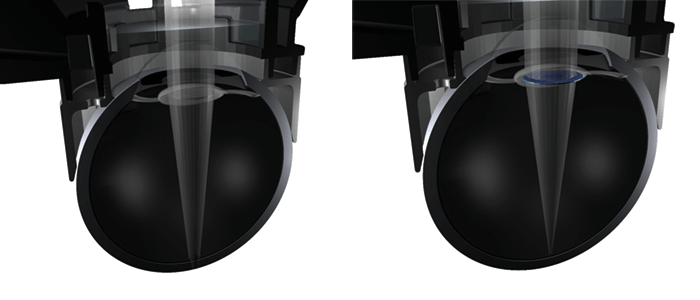
This is an exciting time in refractive cataract surgery as different adjustable lens technologies approach the marketplace. Truly customizing a lens to a patient’s optical system is the dream, and the Perfect Lens technology – which uses a femtosecond laser to alter asphericity, toricity and refractive error of lenses in vivo – could help surgeons make this dream a reality.
Perfect Lens technology adjusts lens power through refractive index shaping (RIS; see Refractive Index Shaping). This process essentially uses a specialized femtosecond laser to induce hydrolysis in the lens, which alters the refractive index and changes the nature of the IOL. The femtosecond device works very similarly to other femtosecond lasers, and can alter a lens in vivo in less than 30 seconds. I have been involved with Perfect Lens from a very early stage, when I was invited to sit on the scientific advisory board. As a surgeon, it is challenging to predict effective lens position (ELP) once the IOL settles after implantation. Having a technology that could ‘fix’ refractive variability would remove the uncertainty with predicting ELP. Surgeons also face the challenge of multifocal patients who are not happy with their quality of vision – even if they are achieving good Snellen acuity. Having the ability to undo multifocality would be a huge advantage for surgeons, and it would provide patients with the peace of mind that any issues with their vision could be fixed. What has been shown in the laboratory about the Perfect Lens technology is that i) adjustment induces very little change to the quality of the modulation transfer function (MTF) curve, ii) the adjustment procedure is repeatable and reversible (over multiple times), and iii) the procedure is compatible with any commercial lens. For instance, a 23 D lens could be altered by 2 D to 21 D, but then treated again and brought back to 23 D, all with very little change in the quality of the optics. Monofocals can also be adjusted into multifocals, and multifocals can be adjusted into monofocals, all in a reversible manner. In this way, Perfect Lens could provide incredible flexibility. And when considering patients, I think it goes without saying that adjustable technology has to be easy for them – with minimal disruption to their daily routine following adjustment. I believe that modifying IOLs through a short femtosecond laser procedure will be much more acceptable to patients than having to undergo a completely new type of procedure.
Confidence in the future
As well as providing multiple options after cataract surgery, the possibility to adjust an implanted IOL postoperatively could boost surgeon confidence in being able to achieve the vision that patients want. More importantly, when using a multifocal platform, surgeons will be confident when talking to patients, as they have the option for later adjustment. In turn, this will give confidence to patients, which is even more important. Right now, cataract and refractive surgeons are faced with two main groups of patients – the younger refractive surgery patients whose lenses are still functioning, and the older patients whose lenses are no longer accommodating or are becoming cataractous. Though I still think that laser vision correction will probably remain the procedure of choice for younger patients, I do think that, as adjustive technologies become available, more patients may consider a refractive lens exchange. One of the main variables concerning patients and surgeons with lens exchange is predictability; the ability to customize an implanted lens to a patient is something that many surgeons have been waiting for. Ralph Chu is Founder and Medical Director of Chu Vision Institute and Chu Surgery Center, Bloomington, MN, USA. Chu reports that he is a member of the scientific advisory board for Perfect Lens.
References
- JF Bille et al., “Chemical basis for alteration of an intraocular lens using a femtosecond laser”, Biomed Opt Express, 8, 1390–1404 (2017). PMID: 28663836.
